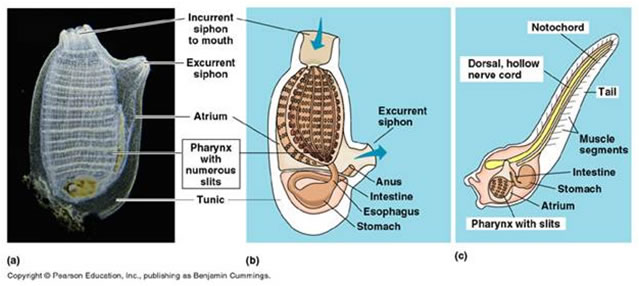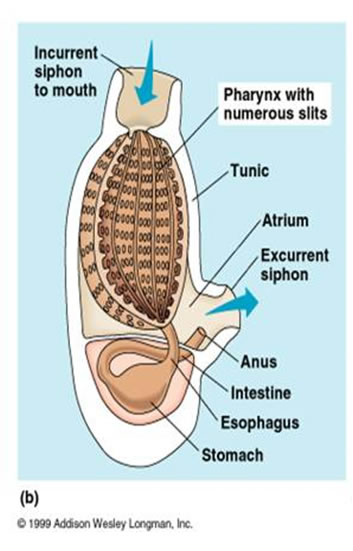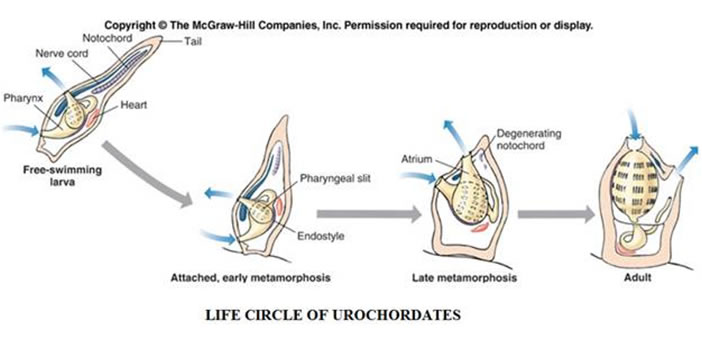MODULE 2: SUBPHYLUM: UROCHORDATA.
2.1. Module Objectives
At the end of this module the learner will be able to:
1.Define the Subphylum Urochordata.
2.Describe the characteristics of Subphylum Urochordata.
2.1. Introduction
The word "Urochordata" is a Greek word meaning 'tail chord'. Members of this subphylum are commonly called Tunicates, because the adults are covered by hard, calcified wall called tunic. Urochordates are strictly marine animals. Adults are sedentary, found attached to surfaces of rocks or other hard objects in the sea. While the larvae are free living. Some species are nicknamed "Sea Squirt" because when they are disturbed they will shoot a jet of water out.
2.2. Basic chordate features of the Urochordata
2.2.1. Chordate features
The larva of the Urochordates possess all the five chordate characteristics. However, the adults have only the pharyngeal pouches; while other four characteristics disappeared. The pharyngeal pouches become gill slits, used as a filter feeding apparatus in the adult.

Figure 1 Adult Tunicate and larval stage
2.2.1. Body cavity( water canal system
Adult Tunicates possess an atrial siphon system, through which water circulates round the body. There are two types of siphons(openings). One is the incurrent siphon and the other is the excurrent siphon. Water usually moves into the body through the incurrent siphon to the, pharynx. Gaseous exchange takes between the water in the pharynx and the surroundings. Water and other products live the pharynx via the excurrent siphon.

Figure 2 The diagram on this slide illustrates the water system in Tunucates.
2.2.2. Digestive system
Tunicates are suspension filter-feeders. This means they feed on the planktons, suspended in the marine environment. Water flows in through the incurrent siphon and is filtered by the pharynx. The suspended food substances in the water are transfered to the esophagus opening. Then trapped by the mucous substances and pushed to go through the digestive system by cilia. Food is digested within the stomach walls and the waste generated are expelled via the anus. The anus terminates into the atrial siphon.
2.2.3. Excretory system
Urochordates have a separate mouth and anus. Urochordata pump out water and waste with an excurrent siphon.
2.2.4. Reproduction
Urochordates are hermaphrodites and can also reproduce sexually or asexually (budding)

Figure 3 Life cycle of urochordata
2.2.5. Respiration
Respiration in Urochordates takes place via the water current system. siphons and their pharynx to filter water.
2.2.6. Nervous system
The nervous system of Urochordates is very simple. It comprised of nerve cells are located between the two siphons.(Phylum Urochordata).
2.3. Module objectives
You have learned from this module that:
1.The subphylum Urochordata comprised of marine animals called Truncates.
2.The name originated from the hard calcified material that surrounds the body of the adult.
3.Tunicates undergo dual life, an adult stage and larval stage.
4.The adult leads a sedentary life, attached to surfaces of rocks.
5.The adult lost most of the chordate characteristics.
6.The larvae possess all the five chordate characteristics